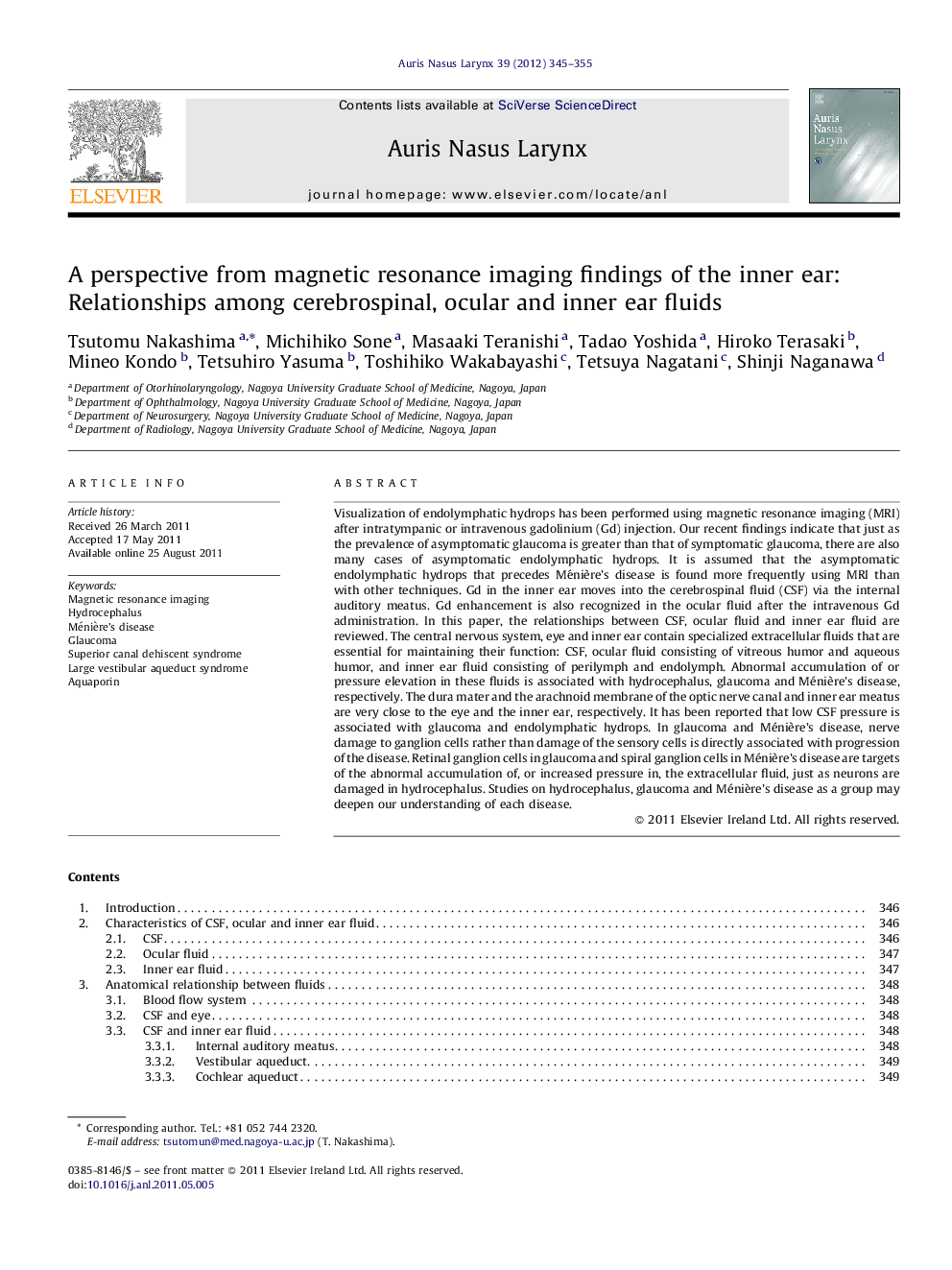| کد مقاله | کد نشریه | سال انتشار | مقاله انگلیسی | نسخه تمام متن |
|---|---|---|---|---|
| 8755689 | 1596210 | 2012 | 11 صفحه PDF | دانلود رایگان |
عنوان انگلیسی مقاله ISI
A perspective from magnetic resonance imaging findings of the inner ear: Relationships among cerebrospinal, ocular and inner ear fluids
دانلود مقاله + سفارش ترجمه
دانلود مقاله ISI انگلیسی
رایگان برای ایرانیان
کلمات کلیدی
موضوعات مرتبط
علوم پزشکی و سلامت
پزشکی و دندانپزشکی
پزشکی و دندانپزشکی (عمومی)
پیش نمایش صفحه اول مقاله

چکیده انگلیسی
Visualization of endolymphatic hydrops has been performed using magnetic resonance imaging (MRI) after intratympanic or intravenous gadolinium (Gd) injection. Our recent findings indicate that just as the prevalence of asymptomatic glaucoma is greater than that of symptomatic glaucoma, there are also many cases of asymptomatic endolymphatic hydrops. It is assumed that the asymptomatic endolymphatic hydrops that precedes Ménière's disease is found more frequently using MRI than with other techniques. Gd in the inner ear moves into the cerebrospinal fluid (CSF) via the internal auditory meatus. Gd enhancement is also recognized in the ocular fluid after the intravenous Gd administration. In this paper, the relationships between CSF, ocular fluid and inner ear fluid are reviewed. The central nervous system, eye and inner ear contain specialized extracellular fluids that are essential for maintaining their function: CSF, ocular fluid consisting of vitreous humor and aqueous humor, and inner ear fluid consisting of perilymph and endolymph. Abnormal accumulation of or pressure elevation in these fluids is associated with hydrocephalus, glaucoma and Ménière's disease, respectively. The dura mater and the arachnoid membrane of the optic nerve canal and inner ear meatus are very close to the eye and the inner ear, respectively. It has been reported that low CSF pressure is associated with glaucoma and endolymphatic hydrops. In glaucoma and Ménière's disease, nerve damage to ganglion cells rather than damage of the sensory cells is directly associated with progression of the disease. Retinal ganglion cells in glaucoma and spiral ganglion cells in Ménière's disease are targets of the abnormal accumulation of, or increased pressure in, the extracellular fluid, just as neurons are damaged in hydrocephalus. Studies on hydrocephalus, glaucoma and Ménière's disease as a group may deepen our understanding of each disease.
ناشر
Database: Elsevier - ScienceDirect (ساینس دایرکت)
Journal: Auris Nasus Larynx - Volume 39, Issue 4, August 2012, Pages 345-355
Journal: Auris Nasus Larynx - Volume 39, Issue 4, August 2012, Pages 345-355
نویسندگان
Tsutomu Nakashima, Michihiko Sone, Masaaki Teranishi, Tadao Yoshida, Hiroko Terasaki, Mineo Kondo, Tetsuhiro Yasuma, Toshihiko Wakabayashi, Tetsuya Nagatani, Shinji Naganawa,